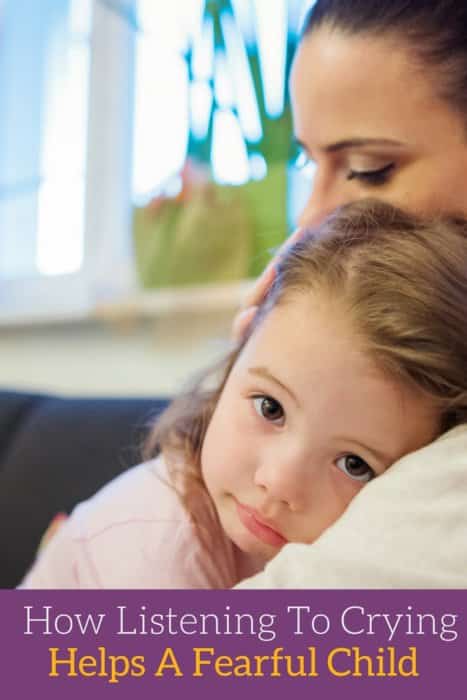![]()
A guest post by Laura Minnigerode
Children’s brains are wired to connect with caregivers. And if they cry it means they feel especially safe and secure. Since a child's limbic system works brilliantly to protect them, they will often find a pretext to offload stress, whether that's a small bump which causes a big cry, or another reason to act offtrack.
When a parent or caregiver can listen supportively to their upset and be responsive, a crying child sheds his or her tensions more easily and they can move past the tears and do whatever has been asked of them more lightly.
This kind of listening can work well, even with the very young.
Here, Hand in Hand instructor Laura Minnigerode talks about how it works for her:
“I work during naptime in an infant/toddler classroom and one of my students, Abby, who had just turned two, had potent, intense fears related to her birth experience, adoption, and separation.
 I began listening to her early on. When we first met, she didn't want me to change her diaper and she cried and moved uncomfortably in protest. I listened to her on the changing table, looking deeply into her eyes to connect with her and showing her I was there until she relaxed.
I began listening to her early on. When we first met, she didn't want me to change her diaper and she cried and moved uncomfortably in protest. I listened to her on the changing table, looking deeply into her eyes to connect with her and showing her I was there until she relaxed.
Over time, we've had lots of listening sessions like this, and she has come to know that I am a safe person to offload her fears.
Sleep, a time of enforced separation, can be particularly hard for children who have separation anxieties. Often, I was the person to help Abby get to sleep at nap-time.
This is how it went: She would try to get up from her nap mat and I would set a warm limit in response. Then she would cry with a frantic, panicked tone, almost screaming, for a few minutes.
I would listen intently and sometimes say, “I am here for you.”
She would calm, and then be able to settle to sleep.
One day I had an experience that clarified for me how powerful this experience of being listened to was for her. I was in the classroom alone with four children, and two of the little ones went to sleep quickly. Abby and another older girl were awake, and Abby was wiggling around, playing with her feet.
Our classroom volunteer came and sat with her, but Abby was not able to do her crying and she stayed awake. Soon, it was an hour into nap-time and both girls were not sleeping.
I stayed, trying to settle them for almost 30 minutes more, but a baby in the room woke up and I had to move away from Abby.
I called for help from the school’s front desk. The helper arrived and laid Abby down. Finally, she gave a short but desperate sounding cry and with that, the long struggle ended and she went to sleep.
It made me realise just how vital it was for a child like Abby to have access to a connected listener. I noticed how she actively sought a time to cry with me before nap time over the following week. For example, a tiny bump or nudge or the wrong person sitting down next to her drew a huge cry in the time period before nap. (You can read more about why children have big tantrums over little things here).
On some level she knew that she needed that crying time, and was worked on having that cry with a person who could and would listen.”
Are you a professional working with children? Find out about the Clinical and Therapeutic Benefits of Hand in Hand's Tools.
Laura Minnigerode is a Hand in Hand Certified Instructor based in Texas.
is a Hand in Hand Certified Instructor based in Texas.